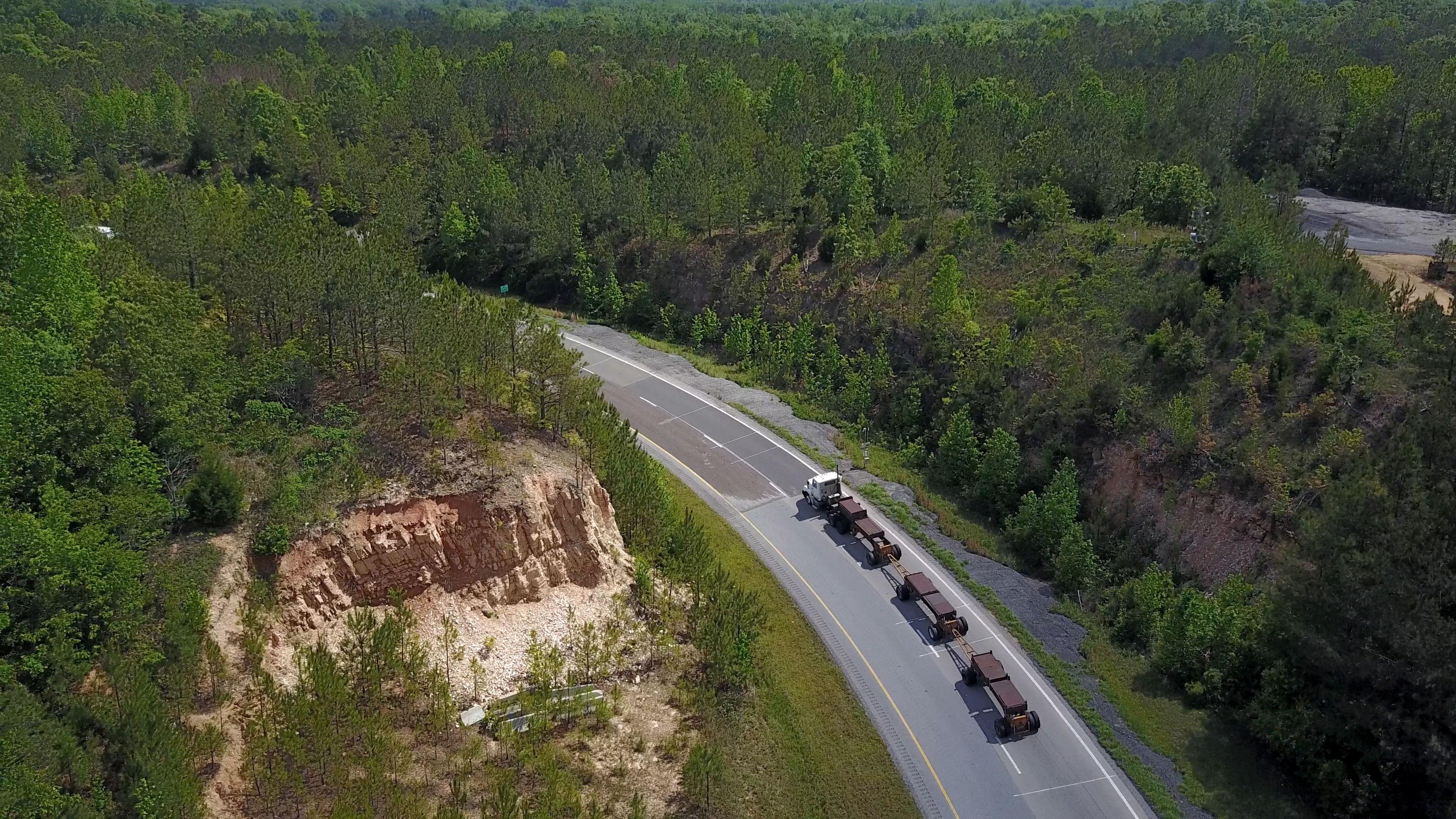

High-friction surface treatments (HFSTs) have been proven to reduce the risk of crashes in areas where vehicles tend to lose control or skid. The expense of these treatments, however, has made them cost prohibitive for many agencies. According to a 2014 report from the Federal Highway Administration (FHWA), prices can range from $19/sq. yd. to $35/sq. yd. Although expensive, agencies see high-friction surfacing as a necessary investment in order to ensure enhanced safety and security against hydroplaning and incidents that can be caused by high speed, braking and low friction.
Less Expensive Alternative
A recent study by the National Center for Asphalt Technology (NCAT) at Auburn University, funded by the FHWA, shows very promising results for a new option that provides enhanced friction results and can be installed at a fraction of the cost.
FRICTION SUMMARY CHART
Figure 1. NCAT Friction Summary Chart shows eFlex w. 50% bauxite (W7A) in the 55 range after two years with 10 million ESALs completed.
The purpose for the NCAT study was to compare a less costly micro surfacing treatment, using bauxite, to a standard HFST in order to determine if thin Asphalt-bound surface treatments would yield high friction characteristics. Results from the study suggest highly polymer modified micro surfacing, with bauxite as 50% of the aggregate blend, does yield long-term high friction numbers. Ergon Asphalt & Emulsions’ eFlex premium micro surfacing, which has been proven to provide consistently high friction levels, was selected as the highly modified micro surfacing emulsion for this study.
“You get more bang for your buck when using eFlex as an enhanced friction surfacing treatment,” said Mike Hemsley, Technical Director – Field Services and Mix Design for Paragon Technical Services, Inc. “It provides the desired high friction numbers, is significantly less expensive, and allows for higher production combined with a quick return to traffic, which is not an option with traditional HFSTs.” The Paragon mix design team played a critical role in the mix design development for the eFlex with bauxite application during the NCAT study.
Standard HFSTs
With standard HFSTs, bauxite is applied following the application of a standard polymer binder resin, creating a thin overlay atop an existing surface. Resins used in HFSTs are generally expensive and the bauxite has to be brought in from overseas. Bauxite is the specified aggregate for HSFTs according to American Association of State Highway and Transportation Officials (AASHTO) requirements. And according to an HFST FAQ sheet provided by the FHWA as part of their Every Day Counts initiative, bauxite has been tested and proven to have "met the threshold for performance necessary to be called an HFST." The exceptional micro texture of this coarse aggregate provides optimal adhesive characteristics, which helps keep water from collecting between tires and the surface (hydroplaning). “We have found, through testing many different aggregates, that calcined bauxite is the preferred aggregate for the conventional HFST’s we supply. It has the best resistance to polishing in high-traffic areas that we have observed,” said Andy Chafin, Director, Technical Operations and Development for ErgonArmor.
NCAT High-Friction Surfacing Comparison and Results
 NCAT Test Track during testing.
NCAT Test Track during testing.
The eFlex with bauxite system was applied on the NCAT test track in 2015. Vance Brothers, Inc., was selected as the contractor for this project. The test area was placed on a section of the track located in an elevated, 15-degree banked curve, which provided an abnormally high amount of lateral shear to the surface. The section was traversed over a two-year period by heavily weighted, multi-tandem trailer trucks. These trucks exposed the area to an equivalent of 10 million Equivalent Single Axle Loads (ESALs). At the conclusion of the study, the standard HFST, which was placed prior to the eFlex section, had been exposed to 25 million ESALs. This type of traffic can typically cause polishing, which reduces friction levels. Performance was evaluated throughout the study in relation to polishing: less polishing equals higher friction.
Upon the conclusion of the study, friction numbers for the eFlex with bauxite sections remained above average, in the 55 range. See Friction Summary Chart for W7A provided by NCAT, Figure 1.
“The benefit of eFlex’s increased durability is that it offers exceptional resistance against the kind of damage or wear that high traffic would give,” said Hemsley. “This was demonstrated by its ability to maintain continuously high friction numbers despite the heavy truck traffic rolling over the pavement daily for two years.”
Implications
“The selection of the eFlex binder in the emulsion was a part of the overall concept of applying a high-quality micro surfacing,” said Mike Heitzman, Senior Researcher – NCAT. “A good polymer modified binder is key to achieving a bond to both the existing pavement surface and a bond to the aggregate that is retained in that micro surfacing.”
Results from the NCAT study significantly increase opportunities for agencies to achieve enhanced friction surfaces in high-speed areas at a fraction of the cost of standard treatments. At a national average cost of less than $3.25 per square yard, and even with the additional cost of the bauxite and higher application costs due to lower than typical production rates, eFlex is a significantly less expensive alternative to traditional HFST binders. And for some agencies, funds that would be allocated toward HFSTs can be used for other projects within their road networks.
Improving existing technologies while creating new, practical and cost effective solutions helps the FHWA, NCAT and others in the road construction industry achieve their goal of maintaining the safety of the driving public efficiently. HFSTs will continue to be of vital importance in this goal, and thanks to the test track study, eFlex highly modified micro surfacing can be classified among approved bonding agents for enhancing surface friction, and therefore, public safety.
Contact your local EA&E salesperson to learn more about the benefits of eFlex.


